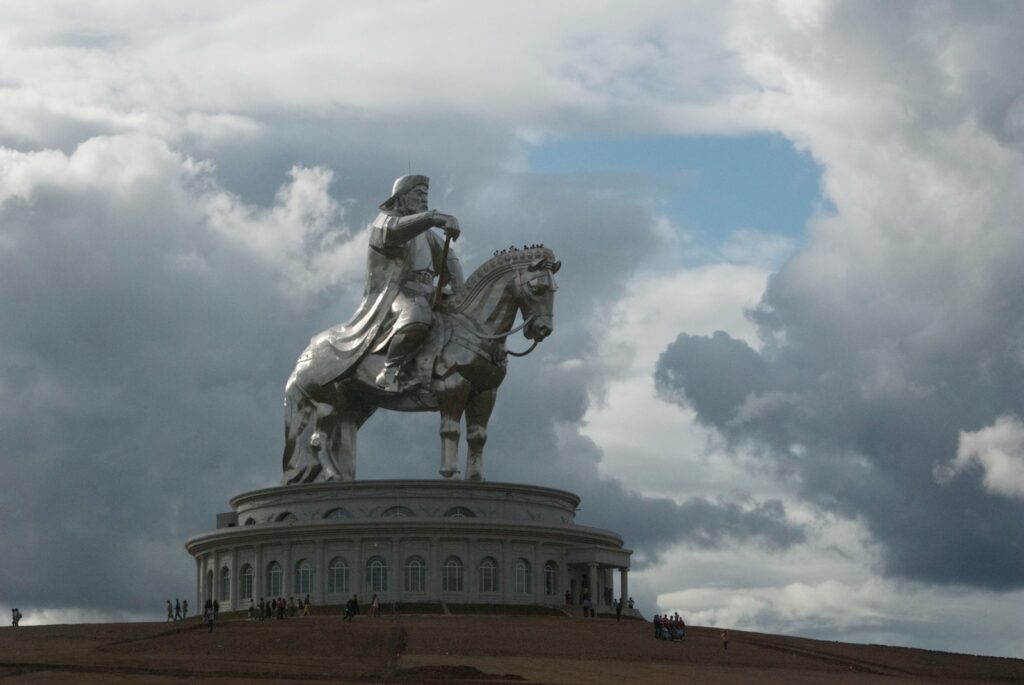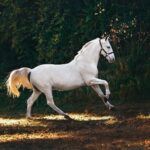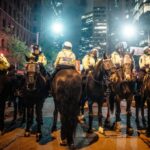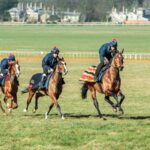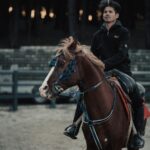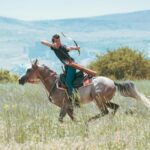Throughout the vast, windswept steppes of Mongolia, one animal has shaped the nation’s history, culture, and identity more profoundly than any other: the horse. For millennia, these majestic creatures have been inseparable companions to the Mongolian people, enabling their nomadic lifestyle and influencing everything from warfare to spiritual beliefs. The relationship between Mongolians and their horses transcends mere utility; it represents a deep cultural bond that continues to define Mongolian identity even as the country modernizes. This profound connection has led to the development of unique traditions, practices, and cultural expressions that celebrate the revered status of horses in Mongolian society.
The Historical Foundation of Mongolia’s Horse Culture
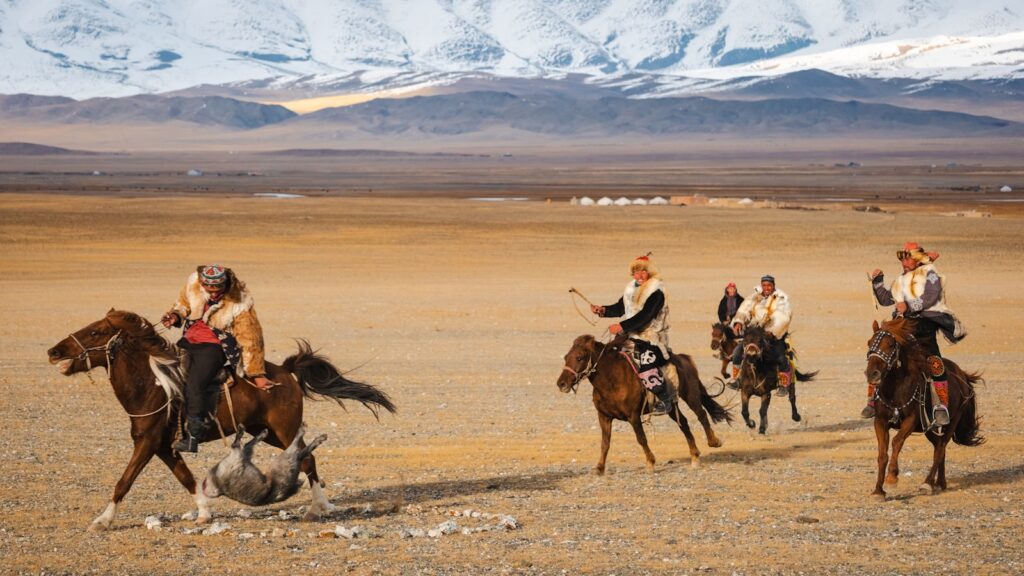
The relationship between Mongolians and horses dates back at least 3,000 years, with archaeological evidence suggesting horse domestication in the region even earlier. This long-standing partnership enabled the Mongolian people to adapt to and thrive in one of the world’s harshest environments, characterized by extreme temperature fluctuations and vast distances. Horses provided mobility, allowing nomadic herders to move with the seasons in search of fresh pasture for their livestock. The military might of the Mongol Empire under Genghis Khan and his successors was largely attributed to their superior horsemanship and cavalry tactics, which helped them conquer the largest contiguous land empire in history. This historical foundation established horses not merely as useful animals but as central figures in the creation and sustainability of Mongolian civilization itself.
Horses in Nomadic Lifestyle and Economy
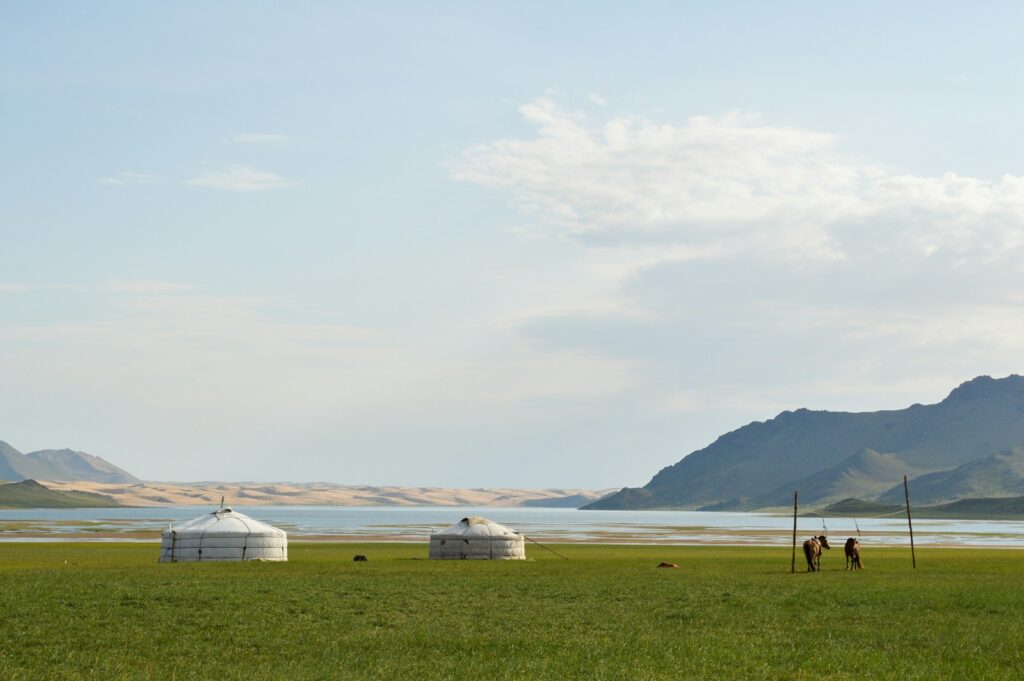
In traditional Mongolian nomadic society, horses serve as multi-purpose assets essential to daily life and economic sustainability. They provide transportation across the vast steppes, allowing herders to manage livestock and relocate their portable gers (yurts) several times per year in search of seasonal pastures. Beyond transportation, horses contribute significantly to the nomadic economy as sources of meat, milk for airag (fermented mare’s milk), and hair for rope-making. Many Mongolian families measure their wealth in horses, with larger herds signifying greater prosperity and status within the community. Even in modern times, when many Mongolians have settled in urban areas, those maintaining traditional lifestyles still rely heavily on horses for their livelihoods, demonstrating the enduring economic importance of these animals in Mongolian culture.
The Sacred Status of Horses in Mongolian Spirituality
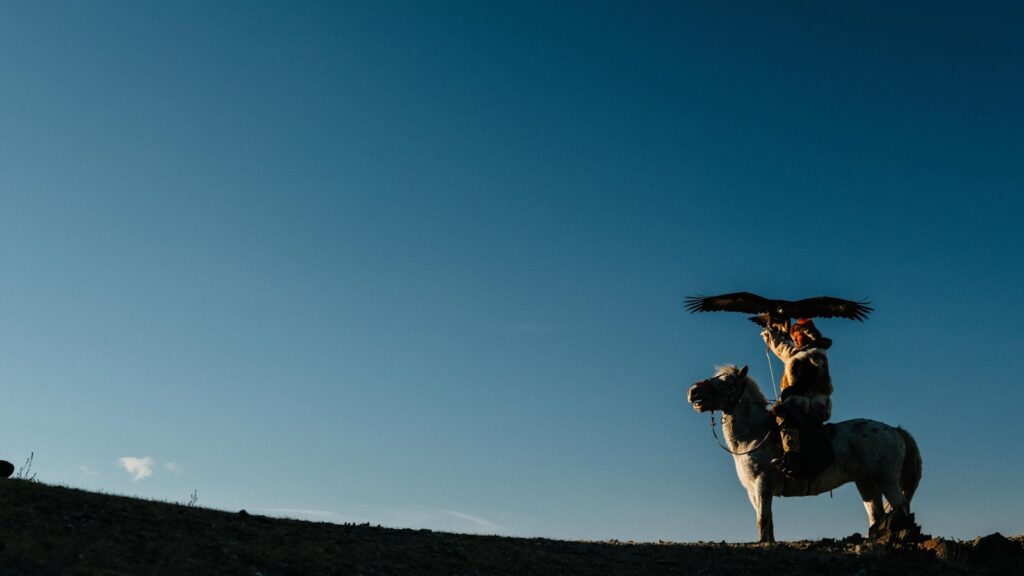
Horses occupy a hallowed position in Mongolian spiritual traditions, bridging the gap between the human world and the divine realm. In traditional Mongolian shamanism and later Buddhist practices, horses are considered spiritual messengers capable of carrying prayers to the heavens, earning them the title “wind horses” or “horses of heaven.” This spiritual significance is visibly represented in the ubiquitous prayer flags (khadag) featuring images of wind horses carrying wishes upward. When a beloved horse dies, traditional customs often include specialized funeral rites that honor the animal’s spirit and ensure its proper passage to the afterlife. Many ancient rock paintings throughout Mongolia depict horses alongside spiritual symbols, further emphasizing their sacred status throughout Mongolian history and their role as intermediaries between humans and the spiritual world.
The Mongolian Horse: A Unique Breed
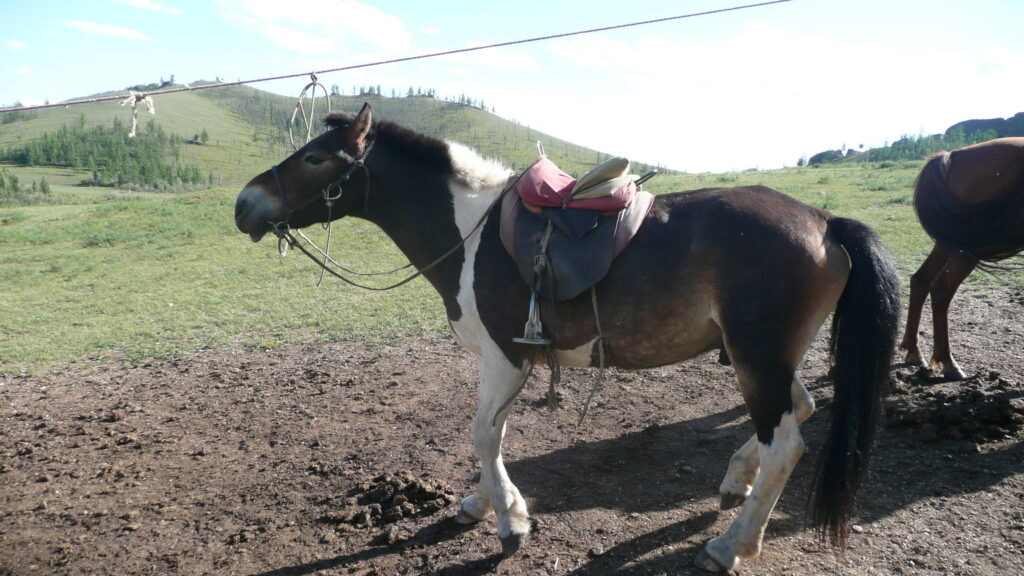
The Mongolian horse is not merely culturally significant but biologically distinctive, having evolved specific adaptations to survive the harsh continental climate of Central Asia. These compact, sturdy horses typically stand between 12 and 14 hands high (120-140 cm), making them smaller than many Western breeds but remarkably strong for their size. Their exceptional endurance allows them to travel up to 100 kilometers per day across rugged terrain, while their thick winter coats enable survival in temperatures that plunge to -40°C. Unlike domesticated horses in many other cultures, Mongolian horses live semi-wild lives, generally fending for themselves on the open steppe and developing natural survival instincts. This hardiness and self-sufficiency have made the Mongolian horse ideal companions for nomadic peoples and have contributed to their revered status in Mongolian culture.
Horsemanship and Coming of Age Traditions
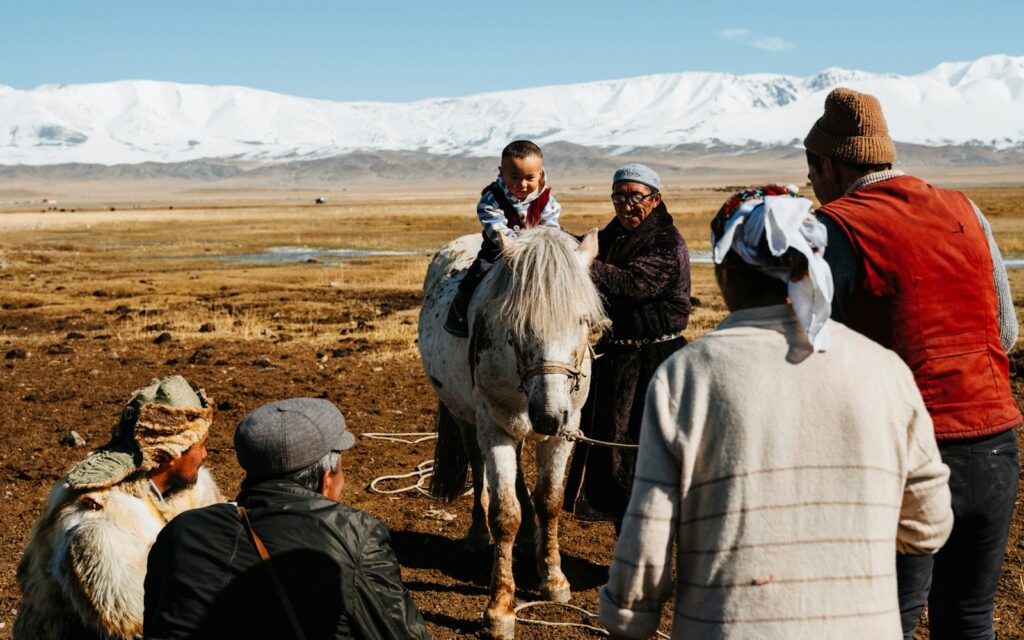
In Mongolian culture, learning to ride a horse marks a crucial milestone in a child’s development and is considered essential to becoming a fully functional member of society. Children as young as three years old begin riding, with many raised in the saddle before they can even walk properly. By age five or six, most Mongolian children in traditional communities can ride independently and begin learning more advanced horsemanship skills, including catching and taming horses. This early introduction to horsemanship is often formalized through coming-of-age ceremonies where young riders demonstrate their skills to the community. The ability to ride well is not merely a practical skill but a source of personal pride and cultural identity, with those demonstrating exceptional horsemanship earning particular respect within their communities.
Naadam Festival: Celebrating Equestrian Excellence
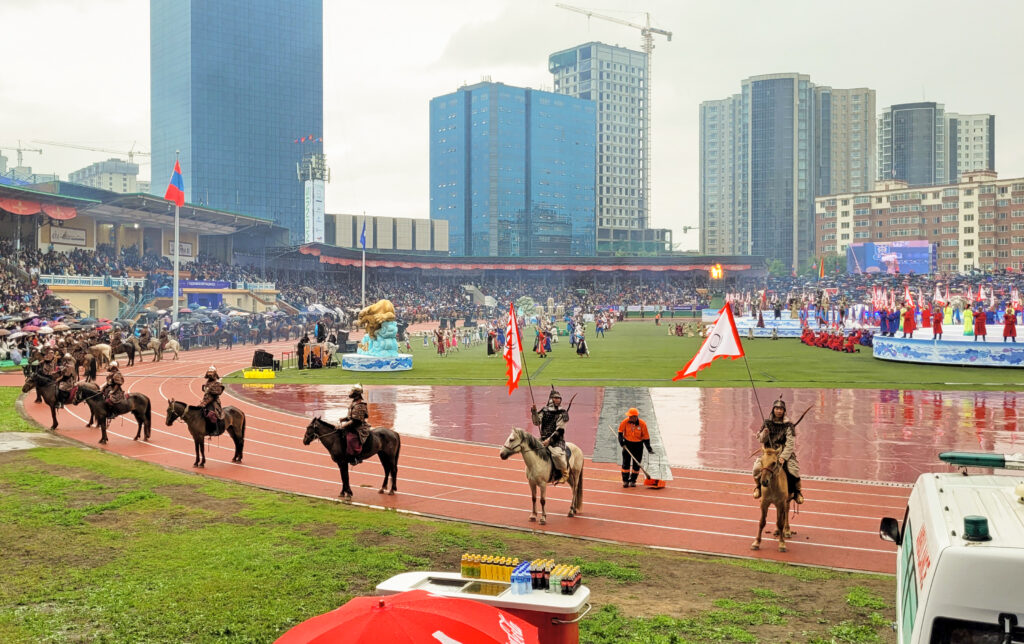
The Naadam Festival, Mongolia’s most important cultural celebration, prominently features horse racing as one of its “Three Manly Games” alongside wrestling and archery. Unlike Western horse races that typically cover short distances on prepared tracks, Mongolian horse races during Naadam traverse between 15 and 30 kilometers of open steppe, testing both horse and rider’s endurance, strength, and navigation skills. Most remarkably, the jockeys are children between the ages of 5 and 13, selected for their light weight and trained extensively in traditional riding techniques. Winning horses and their trainers receive tremendous honor, with the first five horses to finish being celebrated in song and the last horse receiving encouraging words to perform better next year. The Naadam races preserve ancient traditions while continuing to reinforce the centrality of horsemanship in Mongolian cultural identity.
Horse Gear and Craftsmanship
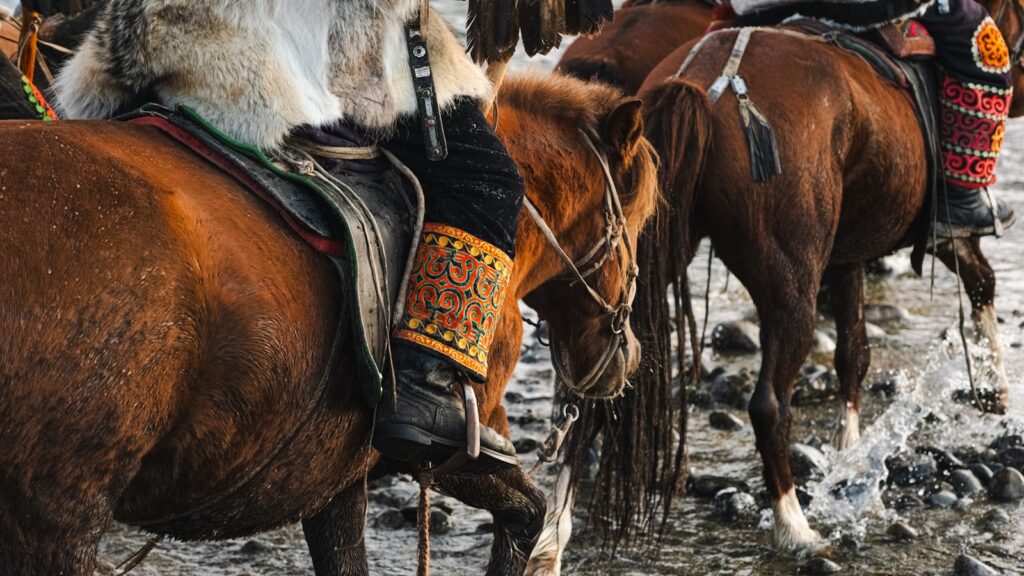
The traditional equipment used for Mongolian horses represents a rich heritage of craftsmanship passed down through generations. Mongolian saddles are distinctive, featuring high wooden pommels and cantles covered in tooled leather and often decorated with silver ornaments that reflect the rider’s status and artistic traditions. Bridles, hobbles, and other horse gear display intricate leatherwork that combines functionality with aesthetic beauty, often incorporating symbolic motifs from Buddhist or shamanistic traditions. The creation of this equipment has historically been a specialized craft requiring years of apprenticeship to master, with different regions developing their own distinctive styles and decorative elements. Many families preserve ancestral horse gear as precious heirlooms, underscoring the cultural and historical significance of these beautifully crafted items.
Horse Milk (Airag) in Mongolian Cuisine and Ceremony
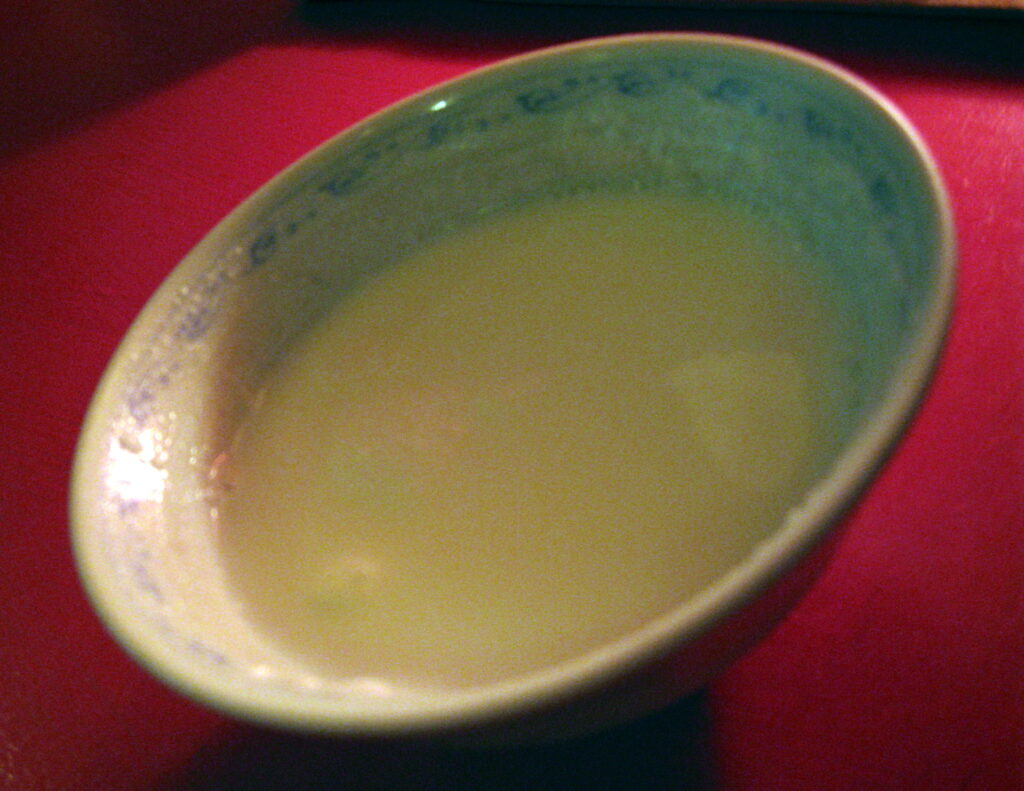
Fermented mare’s milk, known as airag (or kumis in some regions), holds a special place in Mongolian culinary and ceremonial traditions. The production of airag is a seasonal activity occurring during summer months when mares are lactating, requiring specific knowledge about milking techniques unique to horses and proper fermentation processes. This slightly alcoholic beverage is not only nutritionally significant in the traditional diet but also serves important social and ceremonial functions, being offered to honored guests as a sign of respect and used in various spiritual rituals. The first airag of the season is traditionally sprinkled toward the sky as an offering to the spirits, reflecting the interconnection between horses, sustenance, and spiritual practice. Families with the skill to produce exceptional airag gain prestige in their communities, making this horse-derived product an important element of social status and cultural identity.
Horse Symbolism in Mongolian Art and Music
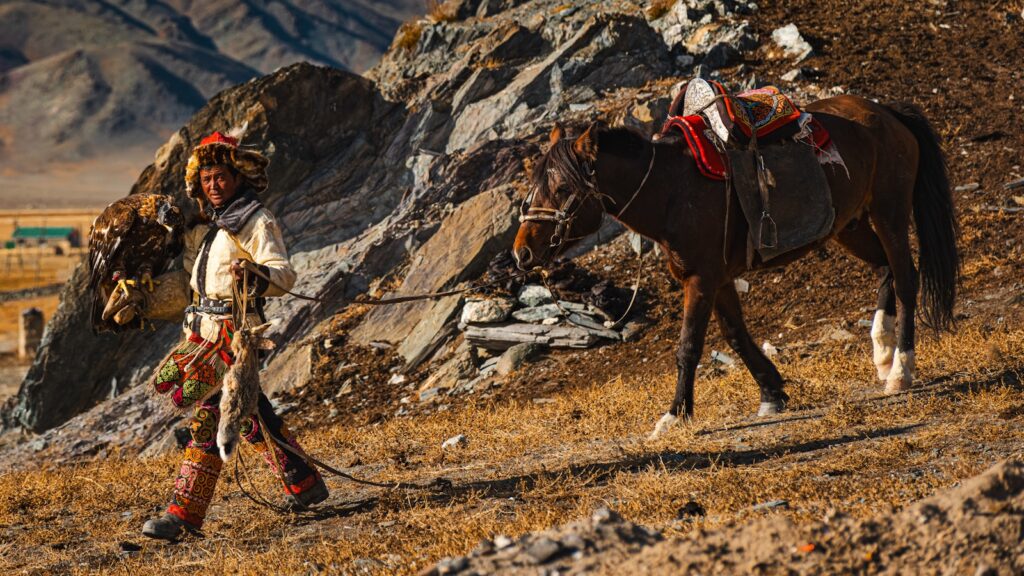
Horses feature prominently as subjects and symbols in traditional Mongolian artistic expressions across multiple media. In visual arts, horses appear in everything from ancient petroglyphs to contemporary paintings, often portrayed with distinctive regional stylizations that emphasize the animal’s speed, strength, and spirit. The morin khuur (horse-head fiddle), Mongolia’s national instrument, exemplifies the integration of horse symbolism in musical traditions, with its scroll carved into the shape of a horse’s head and strings traditionally made from horsehair. Folk songs frequently celebrate famous horses or describe the special bond between riders and their mounts, with distinctive long songs (urtyn duu) imitating the rhythmic cadence of a horse’s gait. These artistic representations not only document the practical importance of horses but elevate them to symbolic status representing freedom, nobility, and the Mongolian national character.
Horses in Mongolian Folklore and Mythology

The rich oral traditions of Mongolia abound with stories featuring horses as central characters or spiritual beings rather than mere animals. Epic poems like the Jangar and Geser cycles include detailed accounts of heroic steeds with supernatural abilities who serve as devoted companions to legendary warriors, often showing greater wisdom than their human counterparts. In many folktales, horses speak to their riders, predict the future, or transform into human form to aid their masters in times of need. The mythological status of horses is further evident in the concept of the heavenly horse Rlung-rta (wind horse), which carries prayers to the gods and symbolizes the human spirit’s capacity for enlightenment. These narratives reflect and reinforce the Mongolian understanding of horses as beings with their own agency, intelligence, and spiritual significance, not merely as possessions or tools.
Horse Training and Management Techniques
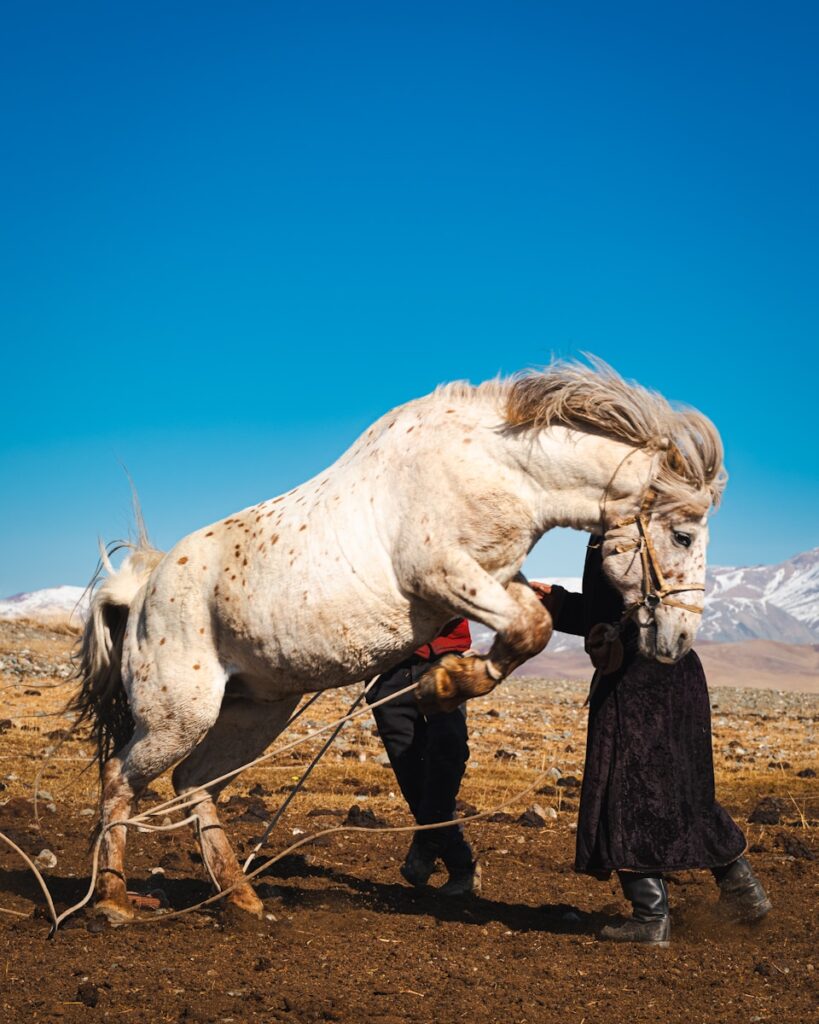
Mongolian horse training methods differ significantly from Western approaches, reflecting the semi-wild management system and cultural values that respect the horse’s natural instincts. Traditional training begins with the gentle breaking of young horses using techniques passed down through generations, focusing on establishing mutual respect rather than domination. Mongolian herders rarely use enclosed stables, instead allowing their horses to roam freely in social groups and developing sophisticated systems for identifying and managing their herds across vast open ranges. The urga (a long pole with a loop of rope), used to catch horses from a distance, represents a specialized tool developed specifically for this management approach. These distinctive practices have evolved over centuries to suit both the practical needs of nomadic life and cultural values that emphasize harmonious coexistence with horses, recognizing them as semi-autonomous partners rather than fully domesticated animals.
Modern Challenges and Preservation Efforts
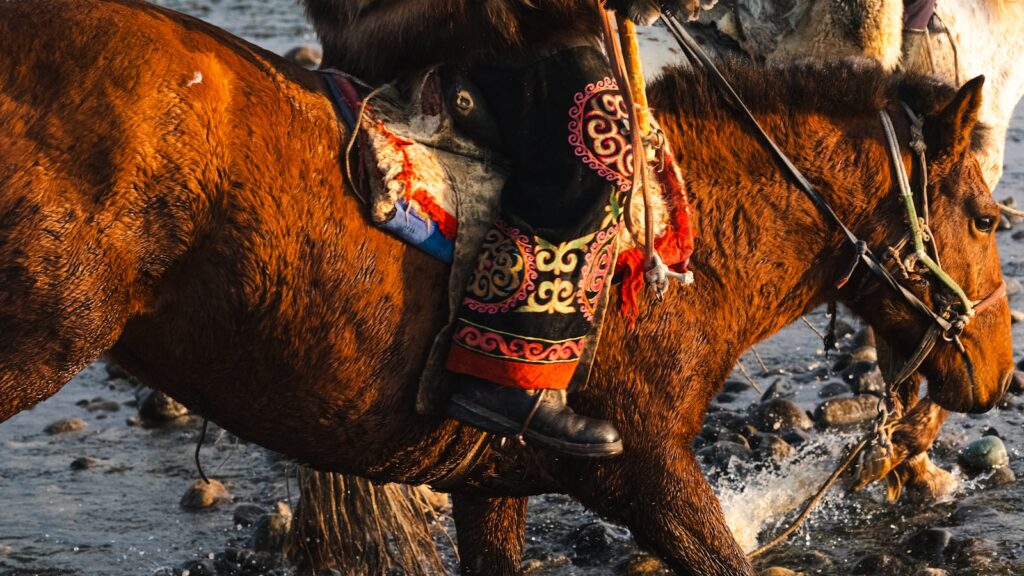
As Mongolia undergoes rapid urbanization and modernization, traditional horse culture faces significant challenges from changing lifestyles and economic pressures. Fewer young Mongolians are learning traditional horsemanship as families move to cities or adopt motorized transportation, raising concerns about the potential loss of ancient knowledge and practices. Climate change and overgrazing have impacted the quality of pastureland, affecting the sustainability of traditional horse herding. In response to these challenges, various cultural preservation initiatives have emerged, including educational programs teaching traditional horsemanship to urban youth, cultural tourism ventures showcasing authentic horse traditions, and government policies supporting nomadic herders. The designation of practices like the Naadam horse race as UNESCO Intangible Cultural Heritage has further bolstered preservation efforts, recognizing the global significance of Mongolia’s unique equestrian traditions.
Horses in Contemporary Mongolian Identity
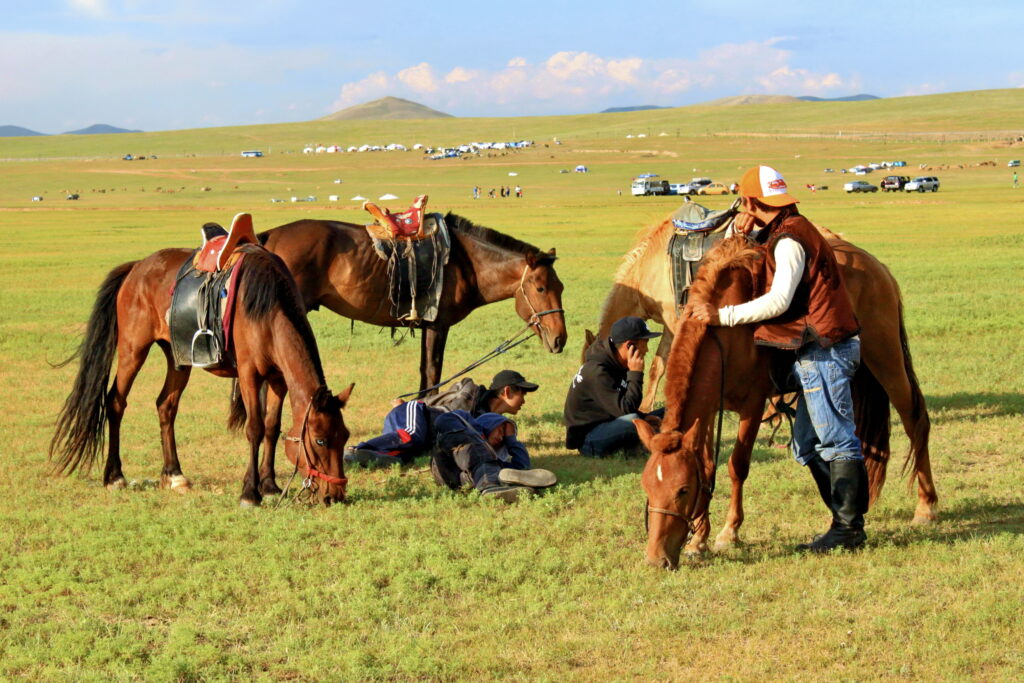
Despite modernization, horses continue to serve as powerful symbols of national identity and cultural pride in contemporary Mongolia. Images of horses appear on everything from currency to corporate logos, government buildings to tourist souvenirs, reinforcing their status as national icons. Even urban Mongolians who have never ridden often display horse imagery in their homes and celebrate equestrian achievements during national holidays. Politicians frequently invoke horse-related metaphors in their rhetoric, drawing on the shared cultural understanding of these animals to communicate traditional values. The enduring popularity of equestrian sports, especially among younger generations seeking to reconnect with their heritage, demonstrates how horse traditions continue to evolve rather than simply disappear in the face of modernization. This persistent symbolic importance suggests that horses will remain central to Mongolian cultural identity even as their practical role in society continues to transform.
Conclusion
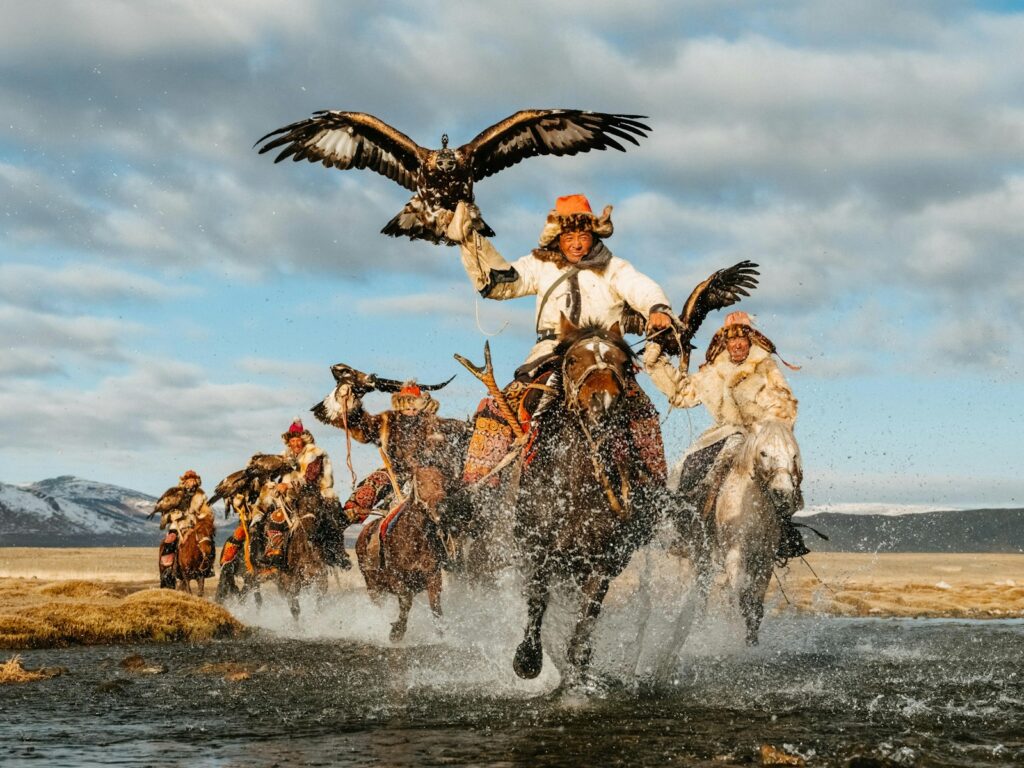
The profound relationship between Mongolians and horses represents one of humanity’s most enduring and multifaceted human-animal partnerships. Far more than beasts of burden or means of transportation, horses in Mongolian culture embody spiritual beliefs, economic systems, artistic expressions, and national identity. This relationship has evolved over millennia, adapting to changing circumstances while maintaining core cultural values that recognize horses as partners rather than possessions. As Mongolia navigates the complexities of modernization in the 21st century, the horse remains a powerful symbol connecting contemporary Mongolians to their nomadic heritage and distinctive cultural traditions. Whether galloping across the steppe with child jockeys during Naadam or appearing in stylized form on urban murals, the horse continues to embody the spirit, resilience, and freedom that define the Mongolian national character.

